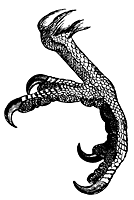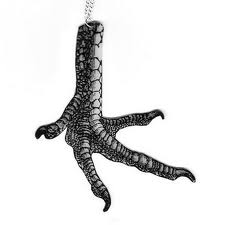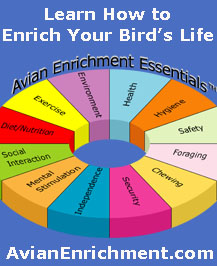External Anatomy
|
Birds are fascinating creatures. Who wouldn't want to just sprout wings and take flight like a bird? It's a captivating thought, at the very least. Birds have a highly developed anatomy that serves to enable the miracle of flight. To fly, they must be incredibly lightweight and yet extremely strong. The combination of these two seemingly opposing traits are reflected throughout the anatomical construction of a bird. Adaptations for flight not only include the obvious anatomical features (wings and feathers) but they also are reflected in a bird's skeletal, digestive, respiratory and, cardiovascular systems. Let's take a tour through the major external and internal features of a parrot's anatomy..... Eye
EarBirds have ear holes instead of ears! These ear holes are hidden by specialized feathers known as auricular feathers. Although parrots don't have external ear structures, they do have three inner ear chambers just like we do. A parrot's middle ear has only one bone versus the three bones (Hammer, Anvil and Stirrup) found in human ears. The ability to hear is very important to a bird's existence in the wild, especially since birds often rely on communications between flock members to warn of predators. Here are a few facts about a bird's hearing:
CereThe top part of a parrot's beak is called the cere. The cere is a soft, fleshy swelling where the bird's nares (nostrils) are located. The color of the cere varies from species to species. You can often tell the sex of a budgie by looking at their cere. The cere is blue for mature males and it is pale brown for females. When they are babies, both the male and female budgies have pinkish ceres! Beak and TongueBirds have beaks instead of teeth. Parrots are also sometimes referred to as "hookbills" due to the curved, hook-like shape of their beaks. Finches and canaries with their short, straight beaks are considered "softbills."
The shape of a bird's beak determines the type of diet it can consume (eat). A parrot's beak is very strong as demonstrated by their ability to crack open nut shells and devour fruits with thick skins. Parrots are extremely agile with their powerful beaks. They can use them to delicately groom their feathers and their mates' feathers as well! All in all, beaks are amazing tools! Parrots have tongues that are strong and broad. Their tongues assist them with eating fruit, seeds, nectar, and pollen. Parrots that eat seeds use their tongues to manipulate seeds or position nuts in the beak. A parrot's tongue is different from a human tongue because it has a bone through the entire length of it! SkinA bird's skin has sensory nerve endings that detect temperature, pressure and pain. The skin of a bird is covered by feathers with the exception of its legs, feet, cere, and eye patches. There are no sweat glands in birds. In order to stay cool birds rely on evaporative cooling through respiration. Up to three-quarters of the air a bird breathes is used for this purpose. Wings
FeathersFeathers are unique to birds and they are elegant masterpieces of design. Feathers are made out of keratin, just like our hair and fingernails. Parrots have between 2000 to 3000 feathers! The three most prevalent categories of feathers, each of which serves a distinct purpose, are:
Feathers also serve:
You can sometimes tell if a bird is healthy or sick just by looking at its feathers. A healthy bird will have shiny, brightly colored and smooth plumage (feathers). By contrast, an ill, stressed or malnourished bird's feathers often have stress bars, or they are dull, discolored and rough in appearance. Poor feather condition, in many cases, is simply the result of poor diet, hygiene and the lack of bathing opportunities. TailA bird's tail consists of a tailbone, a set of flight feathers, and a layer of covering feathers at the base of the tail. The tailbone is a group of six fused vertebrae called the pygostyle, which supports the tail feathers. Tail feathers are arranged in overlapping pairs. Beginning with the outer pair of tail feathers, each succeeding pair of tail feathers overlaps on top of the other. Rump muscles control both the pygostyle and the tail feathers. Some species of birds can open their tails like fans and often do so when they are excited. A bird's tail is important to a bird's ability to fly because
Bird tails also provide balance when they are perched. FeetBirds spend almost 24/7 on their feet, even when they sleep. The only time they aren't using their feet is when they are flying. One of the unique anatomical characteristics of a parrot is the arrangement of its toes. A parrot's foot has two toes pointing forward and two toes pointing backwards. This zygodactyl toe arrangement enables parrots to be proficient (very good) at climbing and grasping objects. Most birds have a three toe-forward, one toe-backward foot structure as illustrated below:
Here's a few more fun facts:
|
Related Articles
 Internal Anatomy
Internal Anatomy







































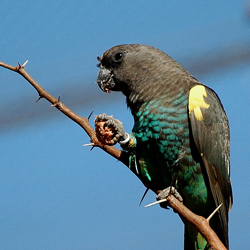



























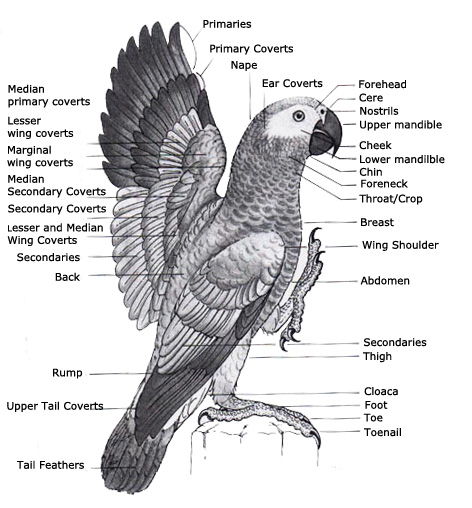 Birds have some of the best eyesight in the animal kingdom. Vision is a parrot's most critical sense as it is important for its ability to survive. Parrots' ability to see with great accuracy at long distances, and in enhanced color, helps them to detect
Birds have some of the best eyesight in the animal kingdom. Vision is a parrot's most critical sense as it is important for its ability to survive. Parrots' ability to see with great accuracy at long distances, and in enhanced color, helps them to detect 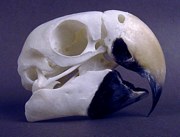 A parrot's beak is short and wide with a curved upper
A parrot's beak is short and wide with a curved upper 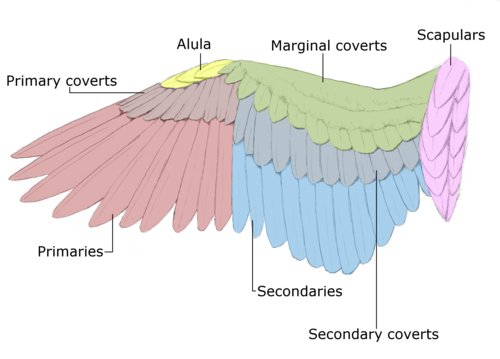 The bone structure in a bird's wing is very similar to the arm and the hand of a human. Wings are constructed from several types of feathers. The primary feathers are the ones connected to the skin over the "hand" bones, while the secondaries are connected to the skin surrounding the "forearm" bones. Both sets of feathers also have a layer of coverts on top of them, followed by another layer of marginal coverts. On the inside of the wing, there are the scapular feathers, sometimes also called the tertiaries.
The bone structure in a bird's wing is very similar to the arm and the hand of a human. Wings are constructed from several types of feathers. The primary feathers are the ones connected to the skin over the "hand" bones, while the secondaries are connected to the skin surrounding the "forearm" bones. Both sets of feathers also have a layer of coverts on top of them, followed by another layer of marginal coverts. On the inside of the wing, there are the scapular feathers, sometimes also called the tertiaries.